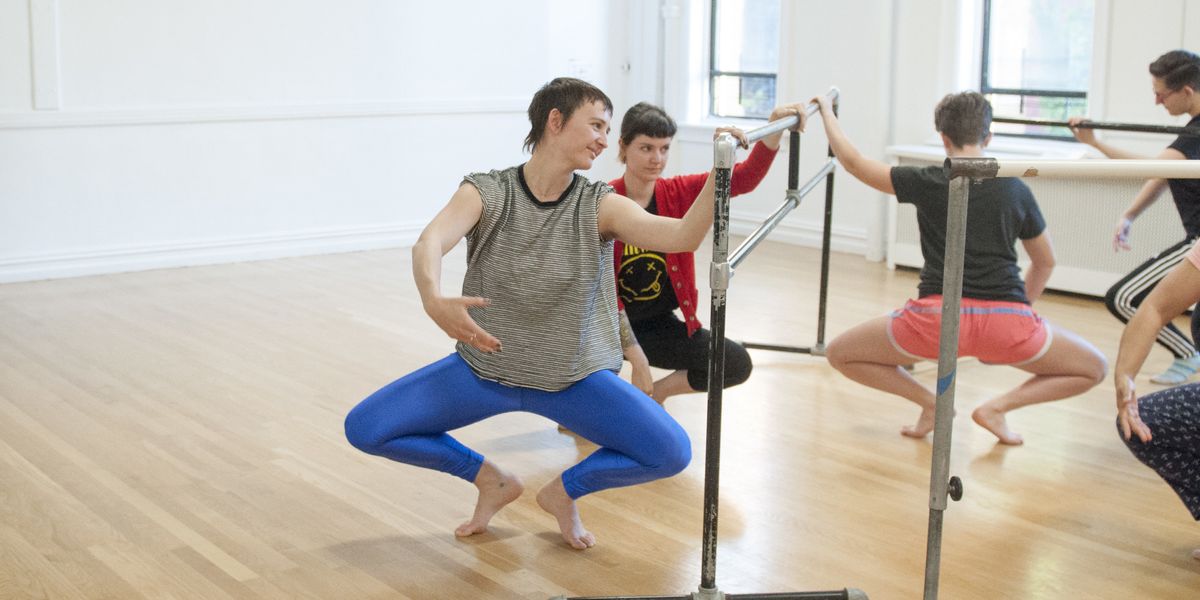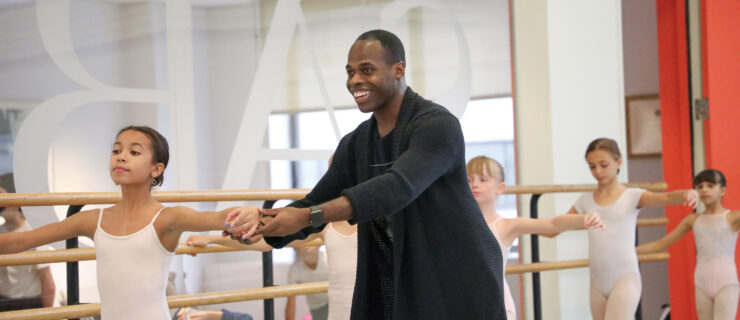Katy Pyle Is Queering Up the Ballet Canon with Her Ballez
A flock of polyamorous princes, a chorus of queer dying swans, a dominatrix witch: These are a few of the characters that populate the works of Katy Pyle, who, with her Brooklyn-based company Ballez, has been uprooting ballet’s gender conventions since 2011.
Historically, ballet has not allowed for the expression of lesbian, transgender or gender-nonconforming identities. With Ballez, Pyle is reinventing the classical canon on more inclusive terms. Her work stems from a deep love of ballet and, at the same time, a frustration with its limits on acceptable body types and on the stories it traditionally tells.
Growing up in Texas, Pyle danced with the Texas Youth Ballet and apprenticed with Austin Contemporary Ballet. She attended the high school ballet program at the prestigious University of North Carolina School of the Arts. Yet from a young age, she received negative messages about her physique: too big, too muscular. Even as she developed a serious eating disorder, teachers continued critiquing her weight.
“I tried very hard to change myself and project delicacy and weakness and as much softness and femininity as I could,” she says. “But no matter what I did, my legs would not be small enough, my butt could not be small enough.”
With her health in danger, Pyle abandoned ballet and attended Hollins University with the intention of becoming a poet. There, she studied with progressive dance educator Donna Faye Burchfield, who reignited her passion for dance. “I realized there was another way,” she says. It was in college, too, that she came out as a lesbian.
Pyle found her way to New York City’s downtown dance and theater scene, making her own work and performing with John Jasperse, Jennifer Monson and Young Jean Lee, among others. The idea for Ballez struck her while talking with friends about a show they had seen, in which the dancers spent much of the performance moving slowly on the floor.
“There’s skill in that, but we were also bored by it,” she says. “The dancers weren’t using what we knew to be this technique they had, to turn and jump and dance in bigger ways. We were missing that in our lives.”
Within her community, ballet was widely seen as representing normative values, bodies, identities and stories. What would it mean, she wondered, to make ballets grounded in classical technique but true to queer experiences? Or, as she puts it, “What if we all were in a ballet and it was actually about us?”
In 2013 Pyle unveiled her first full-length “ballez,” The Firebird, a retelling of Michel Fokine’s 1910 original. In her version, the title character is described as a “tranimal”—part bird, part prince—discovered in the forest by the runaway Lesbian Princess. Her two-act Sleeping Beauty and the Beast begins in a Lower East Side factory in 1893—Aurora, the factory owner’s daughter, falls in love with the female leader of a garment workers’ strike—and springs forward to a 1993 club where AIDS activists meet.
Pyle is currently at work on Giselle of Loneliness, inspired by Giselle and Radclyffe Hall’s 1928 The Well of Loneliness, the first widely published novel with a lesbian protagonist. She is also creating “Ballez Class Everywhere,” an online video series that will allow viewers around the world to practice Ballez. Her hope for the series, she says, is that people like her younger self, who may feel alienated by ballet, can “redefine some of the values, so that it includes and celebrates us as we are.”




